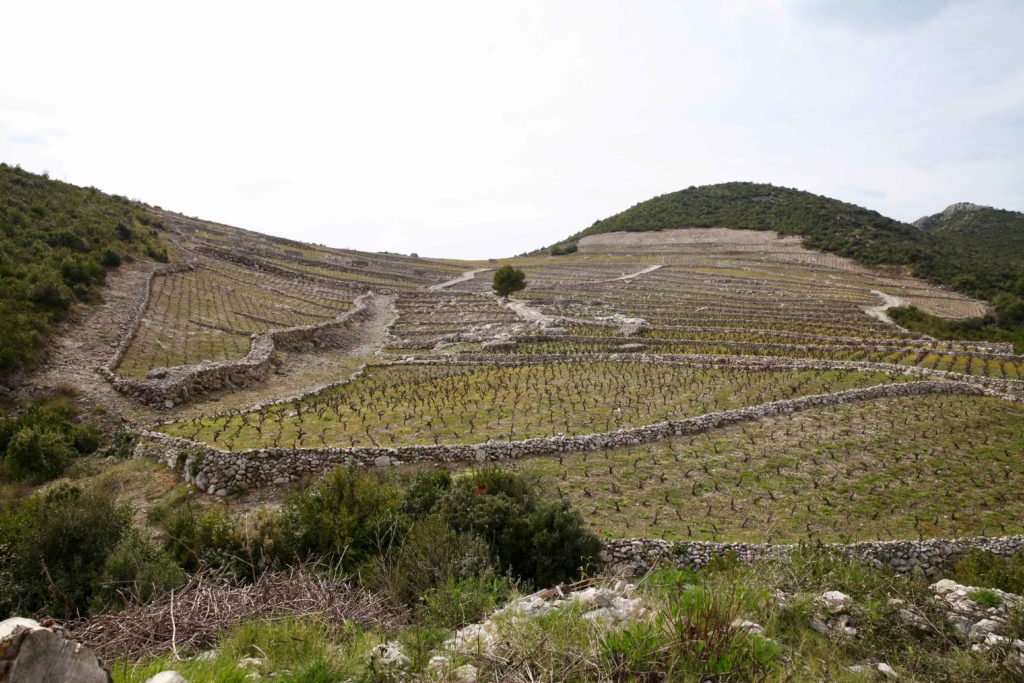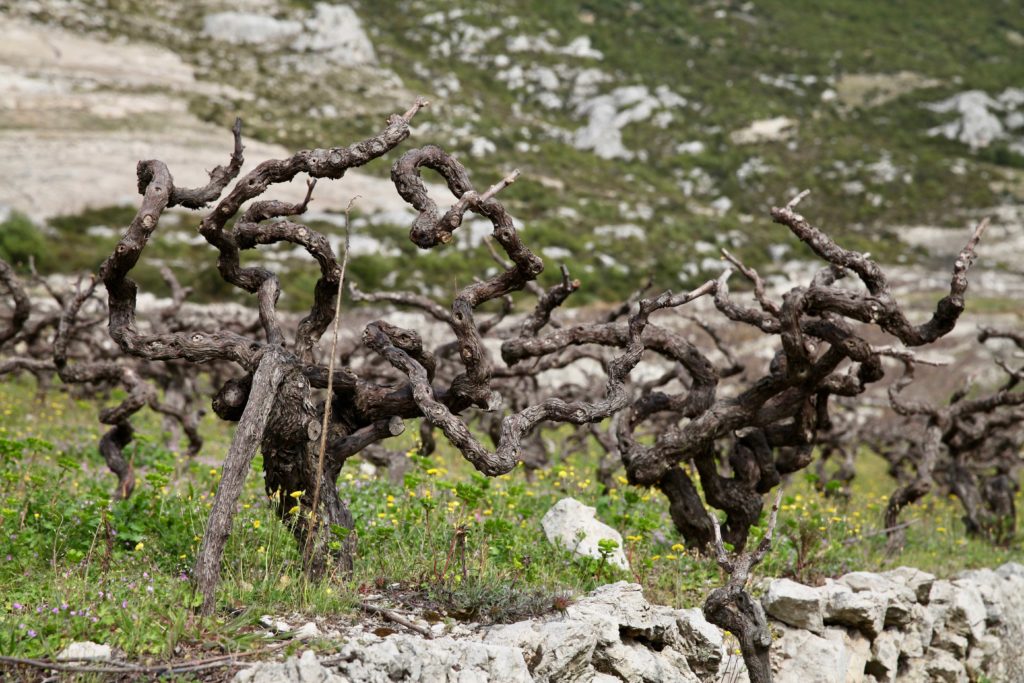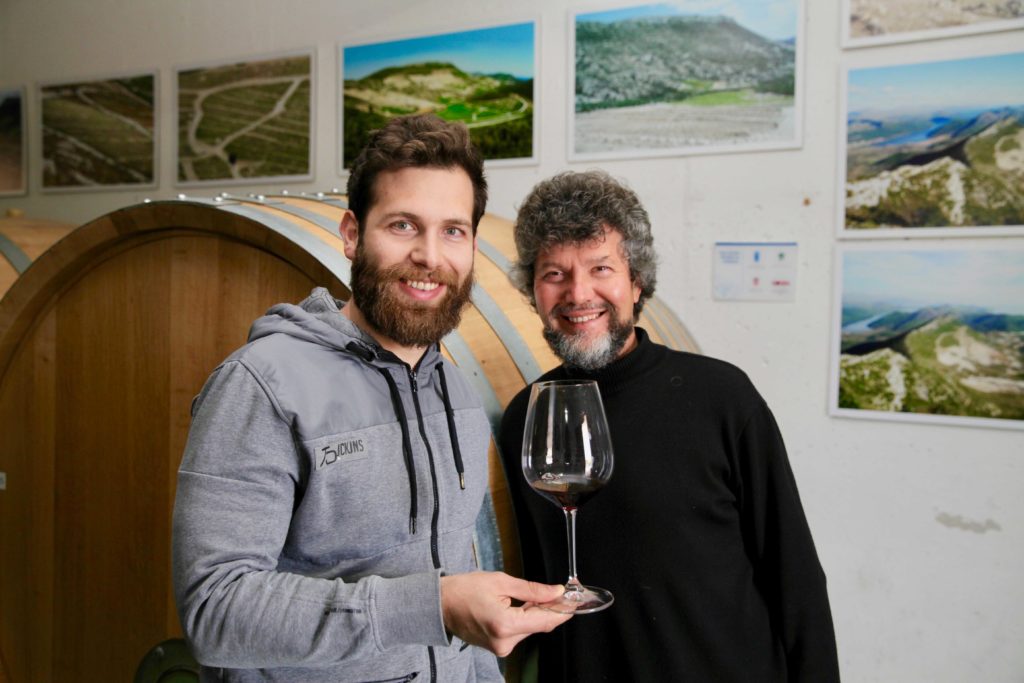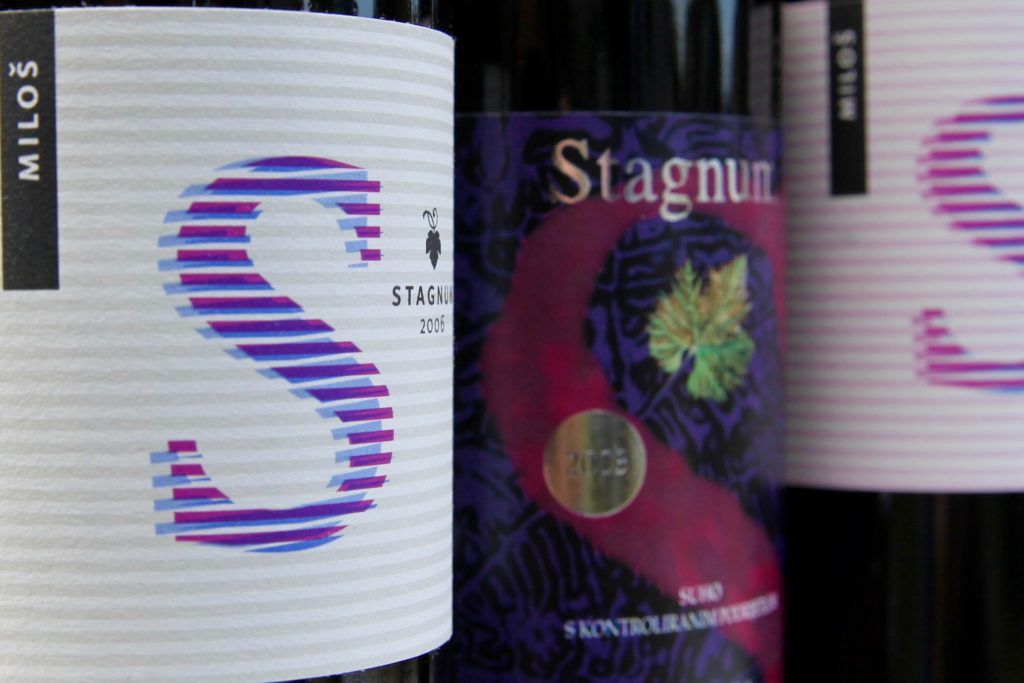A product behind which stands a lot of history and stories
Vinarija Milos
#croatia #redwine #wines
Ivan Milos has to stop shortly in order to install the four-wheel drive of his jeep. The last third of the vineyard is steep and the ground loose and stony. However, the Croatian vintner knows why he has brought us up to top of the valley.
The view from here is spectacular. To the right lies the deep blue waters of the Adriatic and to the left the rugged hills which form this half-island, Peljesac. Beneath our feet is a terraced landscape full of vines, all of which belong to the family run vineyard named, Vinarija Milos. ‘Our family business concerns about 15 hectares of vines which produce approximately 50,000 bottles per year,’ explains Ivan.

Well adapted to a harsh climate
The dry hot summers and sandy ground make it difficult for vegetation to survive. For this reason the Milos have focused on maintaining one of the world’s oldest vine varieties which in fact comes from this region and is called Plavac Mali. Genetically, the plants are a cross between Dobricic and Crljenak. The latter is found In Italy by the name, Primitivo, while in the US they are known as Zinfandel. Just how well Plavac Mali vines have adapted to their environment can be clearly seen by their physical appearance. A knotted, grown in-together stem shoots out branches which then form into a dense netted crown. Through this formation the vines protect themselves from the harsh elements and provide optimal shelter for the fruit. The roots go deep into the Dalmatian limestone. ‘Limestone holds a lot of water and through this the vines can survive long periods of dryness,’ Ivan declares. Moreover, this stone has a high magnesium carbonate content which acts as a permanent fertiliser for the vines.

An ungrafted species
Plavac Mali is an autochthonous grape variety and in the vineyards it is planted on its own rootstock. This means it is an ungrafted grape as the rootstock and the grape are genetically from the same plant. A detail which is found in very few European vineyards. At the end of the 19 century phylloxera or the vine pest, destroyed the majority of native European vines. Vintners had to resort to what was an effective technique, they decided to plant native American varieties which were resistant to the vine pest. They did so by grafting European scions onto the roots of the resistant American rootstock. In the case of vineyards situated on sandy soil such as Vinarija Milos, this was not needed to be done because phylloxera does not thrive in this kind of environment. Therefore, the Milos grow the vines on its own rootstock which gives a much better quality to the fruit.

The importance of plant contact
Ivan wants to show us the wine press house down in the valley. As he carefully steers down the hill he explains ‘the topography does not enable the use of machinery here so everything is done manually from general care to harvesting and de-weeding,’ hard work which doesn’t make it easy to find dedicated employees. Both his father and brother work alongside him year round in the vineyard. Ivan is convinced that this shows in the quality of the wine. ‘Only by regular and direct contact with the plants and earth can a good relationship be built which will last until the end product is extracted.’
The Milos family have managed through this to produce a high quality wine. An achievement which should remain. Smiling, Ivan, adds ‘my brother and I are even more conservative than our father is when it comes to dealing with vines.’

Investment in modern machinery
The business is located at the entrance to a village called Ponikve. A small farm house and adjoining production buildings fit suitably into the rural surroundings. An unsuspecting wooden sign indicates to the visitor that they are in the vineyard of Vinarija Milos. Inside the production building old Croatian oak barrels stand beside modern equipment. ‘A lot of people think that organic wine is produced without the help of machines which simply isn’t true. We invest a lot in good equipment,’ declares Ivan. One of the newest additions is a filling station which allows wine to be gently decanted into bottles.

Not for the mass consumer
Depending on the wine type, the storage time spent in large barrels lasts between two to three years. The final maturation stage which occurs over several years takes place in the bottle. ‘Fermentation occurs completely on a natural basis,’ stresses the vintner. No additional yeast, oak chips or chemicals are added. ‘These methods are used by large producers worldwide in order to meet the taste of a wide consumer population. What is possible to do to a Merlot is not going to work for a Plavac Mali,’ says Ivan, and adds, ‘We produce a product that has a lot of history and stories behind it. This is why we do not want to compromise on the taste.’ Due to this the Milos family are not to be counted on the world market. However, in the meanwhile their several times premiere wine has started to gain a remarkable market presence; from direct sales to visitors, Croatian restaurants and wine dealers in chosen countries such as Switzerland, Sweden, the USA and Canada.

An overview of the Milos wines (all 100% Plavac Mali):
Stagnum Rosé 2015
Dry rosé, 13,5 %
Stagnum Rose is obtained from the finest grapes of Plavac mali variety, from our highest quality locations, terrace-like, manually and organically farmed vineyards. Wine is obtained through the natural squeezing of freshly picked grapes.
Plavac 2012
Dry red, 13,5%
This wine is produced from terraced vineyards on the slopes of Peljesac peninsula. Only autochthonous yeasts is used for fermentation, and from start to finish all wine lives in large Slavonian oak barrels, never new. It is unfiltered and with minimum quantities of sulfites.
Stagnum 2007
Dry red, 15%
The Stagnum wines come from our finest line of wines in Plavac mali variety. This wine is produced from 30 years old terraced vineyards on the slopes of Peljesac peninsula. Only autochthonous yeasts is used for fermentation, and from start to finish all wine lives in large Slavonian oak barrels, never new. It is unfiltered and with minimum quantities of sulfites.
Stagnum Dry 2003
Dry red, 14,6%
The year 2003 was scorching hot, one of the best years in a large part of Europe. Stagnum of the 2003 vintage is a wine of strong structure, a powerful expression and great aging potential. It had been cellaring for ten years before it was made available for sale. In his reviews, Butkovic calls it one of the finest of all the wines produced in the Plavac cultivar. The aging and the formation take place in large Slavonian oak barrels.
Stagnum semi-sweet 2007
16,5 %
The very word “selected vintage” indicates how only overripe grapes were involved in the making of this wine after the regular vintage of 2007. With 16,5% alcohol and 16 grams of residual sugar, this wine is a very unique. The many layers of its aromas, the harmony between the alcohol, extracts, residual sugar, tannin, acids and phenols make this wine suitable for serving as a wine and food in a single flavour. It may also be served as an aperitive with a meal, as a digestive or dessert with pure dark chocolate with 70 % cocoa. The aging and the final wine formation take place in large Slavonian oak barrels.
Stagnum dessert wine 2012
16 %
This Stagnum can only be made in a particular year using an exceptionally demanding technology. The grapes are dried on the grape vine for as long as the weather allows and are later additionally dried on ropes in special rooms. Once, attics were used to do this. This way the grapes are dried until they dehydrate. The drying process lasts for about two months. Grapes are usually so dry that they can only be crushed with feet; the machines simply cannot do the job. Because of the dry and hard mass the job is extremely difficult and the fluids of the wine are obtained drop by drop. The aging and the final wine formation take place in Slavonian oak barrels.